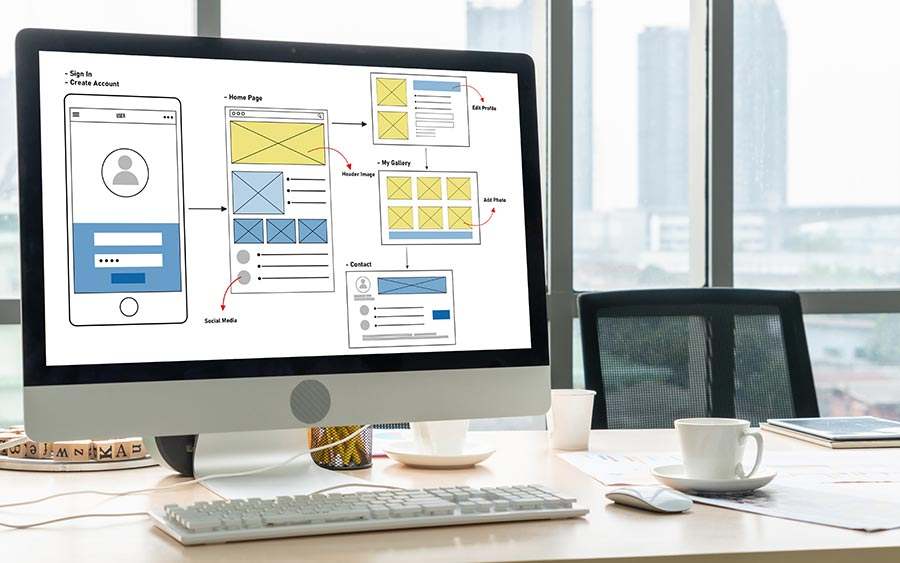In the competitive legal market of San Francisco, your Lawyer Website Design does far more than showcase your law firm — it tells your clients whether you understand their intent. A polished design without strategy may look impressive, but if it doesn’t answer your visitors’ real questions or guide them to the next step, you’ll lose valuable leads.
Every visitor lands on your website with a goal. Some seek quick legal advice, others compare your reputation, and a few are ready to hire you. Understanding these goals — known as user intent — helps your lawyer web designer, or digital agency structure your site with precision.
This post explores why user intent is critical for effective Attorney Web Development, what San Francisco clients expect from a law firm’s site, and how intent-based design directly improves attorney website SEO performance.

User intent describes the purpose behind a user’s search. In legal website development, this could mean:
Each of these requires a tailored page experience. A client reading about “how child custody works in California” has different needs from someone searching “hire divorce attorney San Francisco.” A thoughtful lawyer web designer ensures your pages fulfill these varying intents without confusing visitors.
Modern search engines focus on intent satisfaction. When your content genuinely helps visitors achieve their goal, your attorney website SEO improves organically. Google’s NLP algorithms reward sites that demonstrate topical relevance, clear structure, and semantic depth.
So, a blog titled “How a Family Lawyer Helps in Custody Disputes” satisfies informational intent, while your “Contact Our San Francisco Family Law Office” page fulfills transactional intent. When both are optimized, your entire site ranks more effectively.
Your homepage is where most first impressions happen. A smart Lawyer Website Design instantly tells users:
A professional Attorney Web Development approach ensures a clean, visual hierarchy — headline, services, proof, and CTA. Whether you’re a personal injury lawyer or focused on family lawyer web design, the homepage should feel approachable yet authoritative.
Include phrases like “serving San Francisco families and businesses” and showcase client testimonials or bar affiliations to reinforce credibility.
Each practice area should have a standalone page optimized for its audience. For instance:
These pages address user-specific intent: Does this lawyer handle my problem?
Adding subtopics, FAQs, and visuals makes the content more engaging. A well-crafted Attorney Website Design highlights empathy and clarity over legal complexity.
The “About Us” page should reflect your firm’s identity and establish an emotional connection. Clients in San Francisco value authenticity — not just accolades. Include:
A good lawyer web designer uses this section to humanize your brand and improve dwell time, boosting overall SEO performance.
Your contact page is where user intent meets conversion. Keep it simple, fast-loading, and mobile-friendly.
A seamless experience here shows that your Attorney Web Development is client-first, supporting higher engagement and conversion rates.
A regularly updated blog not only supports attorney website SEO but also demonstrates thought leadership. Write about real issues people face:
By addressing these queries, you position your firm as an expert resource. A well-structured blog also creates internal link opportunities, strengthening your site’s topical authority.
Every stage of the client journey requires different content and design cues.
When your Lawyer Website Design aligns with this journey, your visitors move naturally from curiosity to consultation.
San Francisco clients often search with local intent — adding “near me” or specific areas like “Mission District” or “Financial District.” Incorporating these cues into your attorney website design and schema markup enhances visibility across local search results, helping your firm stand out in Google Maps and business directories.
Don’t combine educational content, testimonials, and CTAs all at once. It confuses both users and search engines. Each page should serve one clear purpose.
A large portion of legal clients browse via smartphones. Without responsive family lawyer web design, you risk losing half your potential inquiries.
Use Google Analytics and Search Console to monitor how users navigate your site. If visitors bounce quickly from your homepage, your lawyer web designer may need to refine the layout or messaging.
Visitors aren’t attorneys. Replace complex terminology with plain language and conversational explanations. This approach improves readability and supports attorney website SEO naturally.
Start every Attorney Web Development project with deep keyword and intent analysis. Look at what real San Francisco users search for — for example, “divorce consultation near me” or “San Francisco tenant rights lawyer.”
Group related topics together for clarity:
A structured lawyer website design helps both users and search engines navigate easily.
Include your main keywords in:
When your attorney website SEO follows consistent patterns, your overall authority grows steadily.
Implement legal and local business schema to strengthen your visibility. Display reviews, awards, and certifications for credibility.
A fast, inclusive attorney website design ensures users stay longer, while accessibility compliance (like alt text and proper contrast) signals quality to search engines.
Intent-driven lawyer website design attracts the right visitors — those genuinely seeking your services.
When content and layout match what users expect, contact form submissions and consultation bookings increase.
Logical navigation, short paragraphs, and strong visuals make your site enjoyable to use.
Optimizing Attorney Web Development with San Francisco-specific data boosts local rankings.
A well-structured site built around intent allows easy expansion as your firm grows.
To ensure your website aligns with user intent, follow these steps:
Your site should include a Homepage, About Us, Practice Areas, Blog, Testimonials, and Contact page — each with distinct intent.
Because search engines prioritize content that fulfills user expectations, matching intent ensures stronger rankings and engagement.
Yes. It allows precise keyword targeting and enhances the user journey, especially in Attorney Web Development.
By blending empathy-driven content with local SEO elements — clear CTAs, approachable language, and optimized location details.
A minimalist layout with a powerful tagline, service overview, testimonials, and a bold call to action works best.
A great Lawyer Website Design isn’t built on aesthetics alone — it’s guided by understanding. When your content, navigation, and visuals align with what clients seek, your website becomes more than a brochure; it becomes a conversion tool.
By applying intent-based Attorney Web Development principles, your San Francisco law firm can attract, engage, and retain clients effectively. Every headline, button, and blog post should serve a purpose — guiding visitors from curiosity to confidence.
At D. Banerjee, our team specializes in crafting high-performing attorney website design solutions that merge SEO, usability, and persuasive storytelling.
Let’s create a user-intent-driven website that converts your San Francisco visitors into loyal clients. Contact D. Banerjee today.

How Roofing SEO Services in Houston Boost Visibility With a Mobile-Friendly Website for Local Contractors

Get Website Development Services in Rocklin to boost leads for your Rocklin business today

How responsive web design Rocklin helps local businesses attract more nearby customers

7 Page-Speed Fixes a Website Designer in Roseville Uses to Lift Conversion Rates

D. Banerjee’s Guide to Website Design in Rocklin: What Your Site Needs to Rank

What Is AI Overviews? Impact on Website Design, Redesign & SEO in Vegas

D. Banerjee’s Guide: WCAG 2.2 for Rocklin Website Development